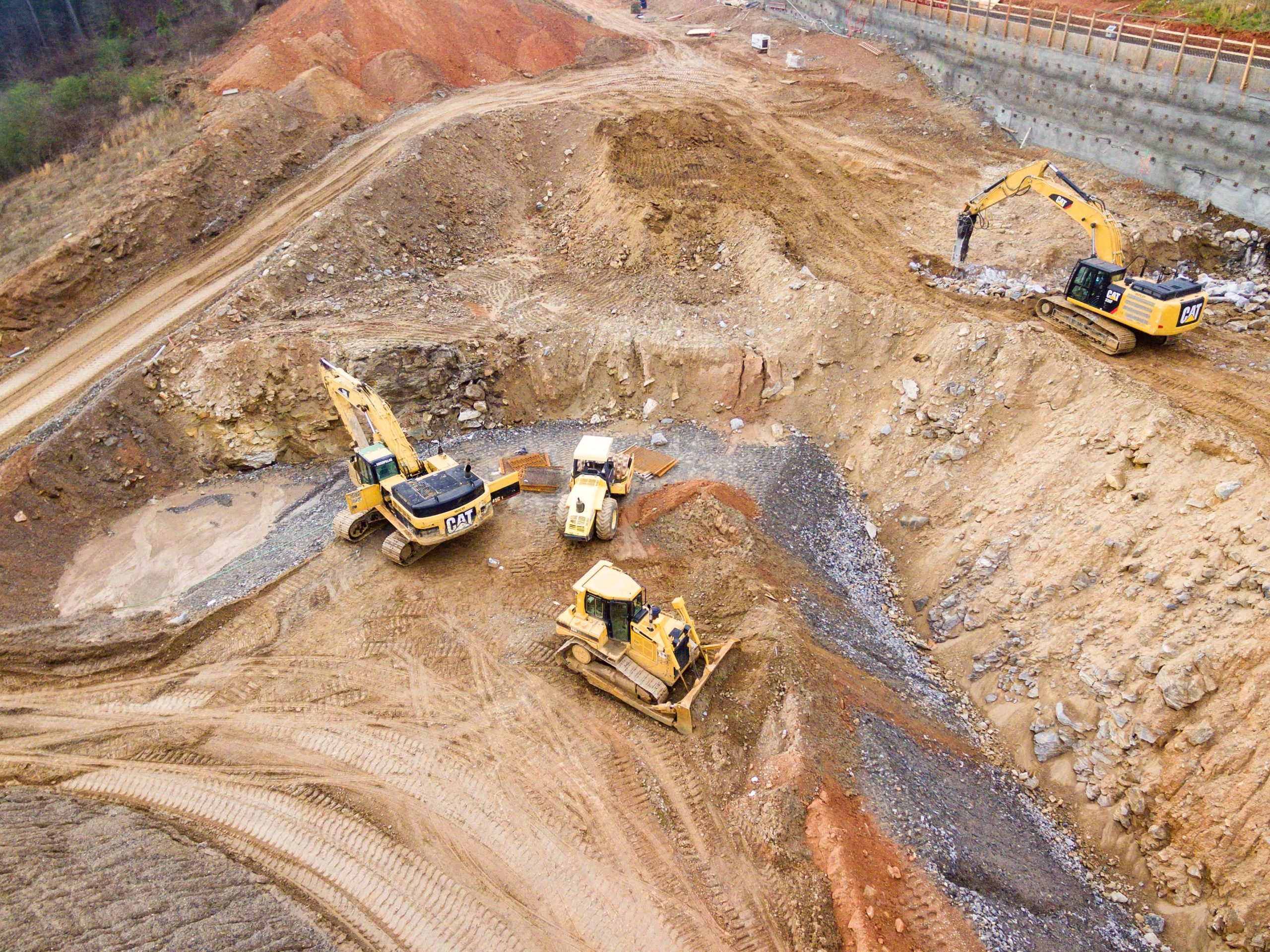THE ENVIRONMENTAL MANAGEMENT AND CO-ORDINATION (AIR QUALITY) REGULATIONS
The objective of the Regulations is to provide for prevention, control and abatement of air pollution to ensure clean and healthy ambient air. It provides for the establishment of emission standards for various sources such as mobile sources (e.g. motor vehicles) and stationary sources (e.g. industries) as outlined in the Environmental Management and Coordination Act, 1999. It also covers any other air pollution source as may be determined by the Minister in consultation with the Authority. Emission limits for various areas and facilities have been set. The regulations provide the procedure for designating controlled areas, and the objectives of air quality management plans for these areas. The emission standards for mobile sources are however stipulated under KS 1515.
| Title | Type | Link |
|---|---|---|
|
pdf |
||
|
pdf |
||
|
pdf |
THE ENVIRONMENTAL MANAGEMENT AND CO-ORDINATION (CONSERVATION OF BIOLOGICAL DIVERSITY AND RESOURCES, AND ACCESS TO GENETIC RESOURCES AND BENEFITS SHARING) REGULATIONS, 2006.
The regulations were developed to protect biological diversity and resources. These Regulations apply to access to genetic resources or parts of genetic resources, whether naturally occurring or naturalised, including genetic resources bred for or intended for commercial purposes within Kenya or for export, whether in in-situ conditions or ex-situ conditions. They do not apply: to plants listed in the Agriculture Act Cap 318; the exchange of genetic resources where the exchange is done by a local community among themselves and for their own consumption; or where the exchange is certified to be purely for food or other consumptive purposes as prescribed by the relevant laws. Any person who intends to access genetic resources in Kenya needs an Access permit for genetic resources in Kenya with a certificate from National Council for Science and Technology. The process of accessing a permit involves a multi-agency engagement and a Prior Informed Consent as may be applicable.
| Title | Type | Link |
|---|---|---|
|
pdf |
Management of Toxic and Hazardous Chemicals and Materials Regulations 2024-Legal Notice 182/2024
To ensure protection of human health and environment from adverse effects of toxic and hazardous industrial chemicals and materials and reduce risks posed by chemicals and provide for the sound management of chemicals.
To ensure the free movement of chemical products.
These Regulations have been in draft and under development since the year 2013 and are now in force.
Chemicals Regulations 2024
| Title | Type | Size | Updated | Counter | Link |
|---|---|---|---|---|---|
|
pdf |
2 MB |
Jul 31, 2025 |
70 |
THE CLIMATE CHANGE (CARBON MARKETS) REGULATIONS, 2024
Environmental Management and Co-ordination (Controlled Substances) Regulations, 2007
These Regulations aim to regulate the production, trade and use of controlled substances and products; provide for a system of data collection to facilitate compliance with relevant reporting requirements under the Montreal Protocol on Substances that Deplete the Ozone Layer; promote the use of ozone friendly substances, products, equipment and technology; and ensure the elimination of substances and products that deplete the ozone layer. Ozone Depleting Substances are chemicals that destroy the stratospheric ozone layer in the atmosphere by increasing the ultra violet rays from the sun to the earth’s surface. Kenya is currently a consumer of ODS and therefore relies on importation and exportation of ODS. Any importer or exporter is required under these regulations to obtain an import license or export license respectively. An importer or exporter of any ODSs in piecemeal must obtain a permit for the same. It is a requirement to comply with the license and permit conditions.
THE SUSTAINABLE WASTE MANAGEMENT (EXTENDED PRODUCER RESPONSIBILITY ) REGULATIONS, 2024 LEGAL NOTICE 176/2024
To extend the responsibility of a producer over a product and its packaging during the life cycle of the product or its packaging and provide a framework for the establishment and operation of mandatory extended producer responsibility schemes.
To operationalize the polluter pays principle and give effect to section 13 of the SWMA.
Extended Producer Responsibility (EPR)
| Title | Type | Link |
|---|---|---|
|
pdf |
||
|
pdf |
||
|
pdf |
||
|
pdf |
||
|
pdf |
||
|
pdf |
||
|
pdf |
||
|
pdf |
||
|
pdf |
||
|
pdf |
||
|
xlsx |
||
|
pdf |
||
|
pdf |
||
|
pdf |
||
|
xlsx |
||
|
pdf |
||
|
docx |
||
|
pdf |
||
|
pdf |
THE ENVIRONMENTAL (IMPACT ASSESSMENT AND AUDIT) REGULATIONS, 2003
Introduction
Environmental Impact Assessment (EIA) is a critical examination of the effects of a project on the environment. Any proponent of a project should conduct an EIA and prepare a report and submit to NEMA. The EIA must be done by a registered and licensed EIA/EA expert by NEMA. The EIA must be conducted before the commencement of the project.
Purpose
The goal of an EIA is to ensure that decisions on proposed projects and activities are environmentally sustainable. It guides policy makers, planners, stakeholders and government agencies to make environmentally and economically sustainable decisions. It is therefore a legal requirement to carry out an EIA before commencement of the project. The EIA process requires that a proponent shall seek views of persons who may be affected by the project. The proponent shall be issued with an EIA license before commencement of the project.
Environmental Audit (EA)
Environmental Audit (EA) is the systematic documentation, periodic and objective evaluation of activities and processes of an ongoing project. . The purpose of EA is to determine the extent to which the activities and programs conform to the approved environmental management plan. An initial environmental audit and a control audit are conducted by a qualified and authorized environmental auditor or environmental inspector who is an expert or a firm of experts registered by NEMA. In the case of an ongoing project NEMA requires the proponent to undertake an initial environmental audit study to provide baseline information upon which subsequent environmental audits shall be based. The proponent shall be issued with an acknowledgement letter and an improvement order where necessary.
| Title | Type | Link |
|---|---|---|
|
pdf |
THE ENVIRONMENTAL MANAGEMENT AND CO-ORDINATION (NOISE AND EXCESSIVE VIBRATION POLLUTION) (CONTROL) REGULATIONS, 2009.
These Regulations aim at ensuring the maintenance of a healthy environment for all people in Kenya; the tranquillity of their surroundings and their psychological well-being by regulating noise levels and excessive vibration. The Regulations elevate the standards of living of the people by prescribing acceptable noise levels for different facilities and activities. The Regulations prescribe the maximum permissible noise levels from a facility or activity to which a person may be exposed to; provide for the control of noise; and provide for mitigating measures for the reduction of noise. The maximum permissible noise levels are based on the various zones as outlined in the Regulations. These regulations apply even to work places and do not negate the Factories and Other Places of Work (Noise Prevention and Control) Rules, 2005. These Regulations prohibit production of any loud, unreasonable, unnecessary or unusual noise which annoys, disturbs, injures or endangers the comfort, repose, health or safety of others and the environment. Any person who is likely to be involved in activities that emit noise or excessive vibrations beyond the permissible levels must obtain a license or a permit respectively from the authority.
Disclaimer:
“Regulations are currently being enforced by the county governments of Kenya.”
| Title | Type | Link |
|---|---|---|
|
pdf |
THE ENVIRONMENTAL MANAGEMENT AND COORDINATION (MANAGEMENT AND CONTROL OF PACKAGING MATERIALS ) REGULATIONS, 2024 LEGAL NOTICE 181/2024
To establish a framework for the management and control of the use of plastic packaging materials and promote the use of environmentally-friendly packaging material.
The gazette notices banning use of plastics are now finally strengthened with the force of subsidiary legislation.
To preserve and promote a clean and healthy environment for sustainable development and promote the recycling of plastic packaging material.
Plastic Management Regulations 2024
| Title | Type | Size | Updated | Counter | Link |
|---|---|---|---|---|---|
|
pdf |
2 MB |
Aug 01, 2025 |
59 |
THE ENVIRONMENTAL MANAGEMENT AND COORDINATION (SAND HARVESTING ) REGULATIONS, 2024 LEGAL NOTICE 179/2024
To establish a framework for the sustainable utilization of sand resources and good environmental practices during sand harvesting.
This is a novel Regulation that seeks to give effect to the erstwhile Sand Harvesting Guidelines of 2007 and devolve the sand harvesting activity.s and standards for environmental governance to ensure compliance in the waste management sector
Sand Harvesting Regulations 2024
| Title | Type | Size | Updated | Counter | Link |
|---|---|---|---|---|---|
|
pdf |
1 MB |
Aug 01, 2025 |
16 |
| Title | Type | Link |
|---|---|---|
|
pdf |
ENVIRONMENTAL MANAGEMENT AND CO-ORDINATION (WATER QUALITY) REGULATIONS, 2024
Introduction
Water Quality Regulations apply to water used for domestic, industrial, agricultural, and recreational purposes; water used for fisheries and wildlife purposes, and water used for any other purposes. Different standards apply to different modes of usage. These regulations provide for the protection of lakes, rivers, streams, springs, wells and other water sources.
Purpose
The objective of the regulations is to prohibit discharge of effluent into the environment contrary to the established standards. The regulations further provides guidelines and standards for the discharge of poisons, toxins, noxious, radioactive waste or other pollutants into the environment in line with the Third Schedule of the regulations.
The regulations have standards for discharge of effluent into the sewer and aquatic environment. While it is the responsibility of the sewerage service providers to regulate discharges into sewer lines based on the given specifications, NEMA regulates discharge of all effluent into the environment.
No person shall discharge any effluent from sewage treatment works, industry or other point sources into the environment without a valid effluent discharge license issued by NEMA.
Every person shall refrain from any actions, which directly or indirectly cause water pollution, whether or not the water resource was polluted before the enactment of the Environmental Management and Coordination Act (EMCA), 1999.
THE ENVIRONMENTAL MANAGEMENT AND COORDINATION (WETLANDS, RIVERBANKS, LAKESHORES, AND SEASHORES MANAGEMENT REGULATIONS 2009)
Introduction
Wetlands are areas permanently or seasonally flooded by water where plants and animals have become adapted and incorporates riparian and coastal zones. This regulation seeks to ensure wetland resources are utilized in a sustainable manner compatible with the continued presence of wetlands and their ecological goods and services. The sustainable use of wetlands should be integrated into the national and local land use plans to ensure sustainable use and management of the resources.
Purpose
The main purpose is to provide for the conservation and sustainable use of wetlands and their resources in Kenya. Environmental Impact Assessment and Environmental Audit as required under the EMCA shall be mandatory for all activities likely to have adverse impact on the management of wetlands.
| Title | Type | Link |
|---|---|---|
|
pdf |



